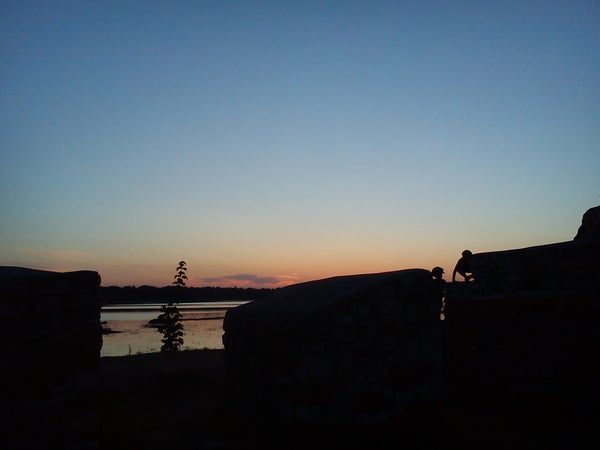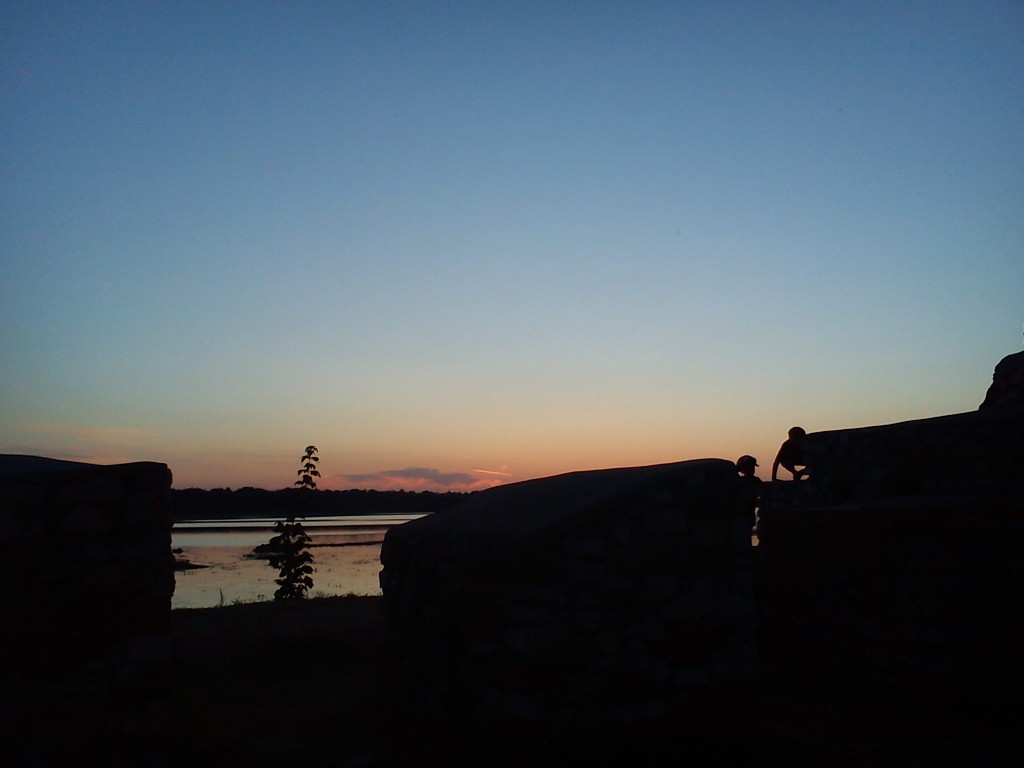This article was published in Scientific American’s former blog network and reflects the views of the author, not necessarily those of Scientific American
Our own RQ tormented me a little bit this summer. She kept sending nifty tidbits of geology from her summer excursions in Latvia. And she's got lots! By popular demand*, we're going to have a super-swift overview of Latvian geologic yumminess, with the promise of more where that comes from.
Latvia is located between Lithuania and Estonia on the Baltic Sea. It's got this neat shape, like so:
On supporting science journalism
If you're enjoying this article, consider supporting our award-winning journalism by subscribing. By purchasing a subscription you are helping to ensure the future of impactful stories about the discoveries and ideas shaping our world today.
That big chunk out of the top is the Gulf of Riga. A lot of our adventures will take place on the river that runs from Riga through the country and out the other side, so make a special note.
Don't expect any mountain vistas here. Latvia is in a pretty geologically quiet location. It's on the western portion of the East European Platform, which is part of the East European Craton. If you know your cratons, you know those are basically the quiet cores of continents, and they've generally already lived out their geologic excitement and settled down into respectable old age. The shield part of a craton is where the crystalline basement rocks are exposed, while the platform portion is overlain by sediments. Like this lovely dolomite outcrop at Dole (pronounced duo-leh) Island in the Daugava River:
We will eventually get to know this dolomite very well. It's delicious. So is the island it's on. And the river it's surrounded by. And you'll get to see how the ancient bits of dolomite were used to make an ancient castle, and it is all simply scrumptious. It used to be even more scrumptious, before they put in a dam and the island got drowned, but that is a story RQ will tell you someday soon.
Latvia has an additional sedimentary topping, which hides much of these thick sedimentary rocks. Like Seattle, most of the region is buried under deposits left by the great ice sheets that covered the land and sea just over 10,000 years ago. We'll see evidence of those great ice sheets and lobes nearly everywhere we look, even at a man-made lake.
The lake, a landform locally known as a karjers, was scooped out as people mined fine sand and gravel. These would be Quaternary deposits left by the ice sheets. So basically, this lake wouldn't exist if the ice sheets hadn't left behind handy sediments that humans took advantage of for their own needs.
These glacial sediments are as deep as 310 meters in some places! And I put an exclamation point there because as far as topographic relief goes, Latvia really hasn't got any. The highest point in the entire country is only 312 meters (1,023 feet). Most of the rest of it is a lot shorter! One of our adventures will take us to the highest point near RQ's stomping grounds, which tops out at a whopping 75 meters.
"Go ahead and laugh," RQ dares you.
The thing is, Latvia is a wonderful example of how even the quiet, seemingly-boring spots can be chock-full of lovely geology - if you only know how to look. And in Latvia, a long history intersects with deep time in fascinating ways. Take this cave, which we shall someday explore:
RQ says this cave in the ancient sandstone is quite typical of the country - and this one happened to house a Liv warlord during the Christian invasion in the 12th century. Neato!
So there you go, a mere appetizer. Soon, we shall feast on Latvian geology, which will make a nice change of fare from our Cascades volcanoes. I've also got some planetary geology to plate for us - much goodness is coming in from Mars and Pluto!
And I promised you a castle, and sorta delivered, but you didn't get any pictures! Here, have the ruins of the oldest stone church in Latvia to make up for it:
Once a year, the water in the reservoir is lowered, and you can walk out to the ruins, which are built from more of that magnificent dolomite. See how beautiful this is? This, my friends, is why doing Latvia geology is going to be such a delictible feast for our eyes!
*My informal Facebook poll on What Dana Should Write About Next came up overwhelmingly Latvia. After those pictures, can you blame the voters?!
Do you have questions about Latvia's geology? You can email them to me at dhunterauthor at gmail, and I'll put them on our wishlist.
References:
Vitālijs Zelčs and Māris Nartišs, eds. (2014): Late Quaternary Terrestrial Processes, Sediments, and History: From Glacial to Postglacial Environments. University of Latvia






